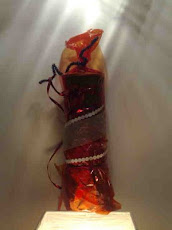
DIY is a great way to save money and it can be far simpler than you think. We live an old cottage I renovated some years ago, and our son lives in a five year old property 160 miles away. The paint on the ceiling over our shower was flaking and on son’s bathroom ceiling had also started to flake badly and where there had been a plumbing leak the water had seeped through and stained the kitchen ceiling.
If you have this sort of problem then there is an easy way around it, and it worked in both properties.
First, wearing a mask of some type if you’re working over head height, rub the flaking area with fine sand paper and remove as much of the offending areas as you can without going overboard. Then, brush on a heavy coat of PVA and leave it 24 hours, then paint over the top of it. In the case of the stained areas these were just cleaned off with a normal (gentle) surface cleaner and were not rubbed down.
If you find that there is a reaction and the surfaces you have just covered start to bubble do not panic! This happened with our son’s bathroom but as the PVA dried so the bubbles went completely down. The surface bubbled again when painted but again went completely down and many, many months later, all is still well, no flaking and no stains.
Easy and cheap, the 2.5 litres of basic PVA I bought cost less than £4 from the local DIY store. Or you could call a painter and decorator in...










